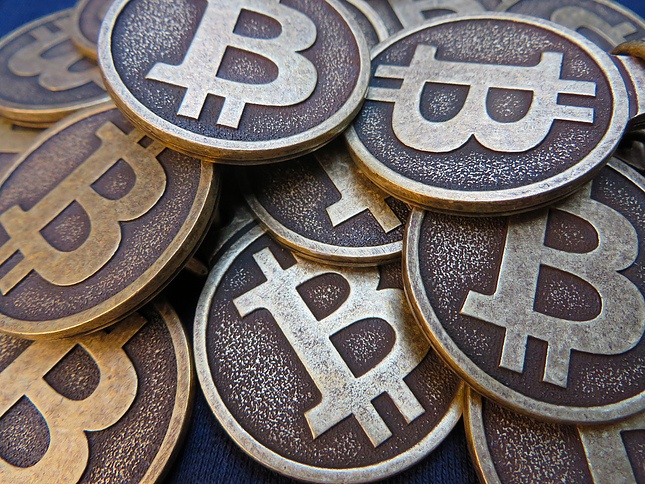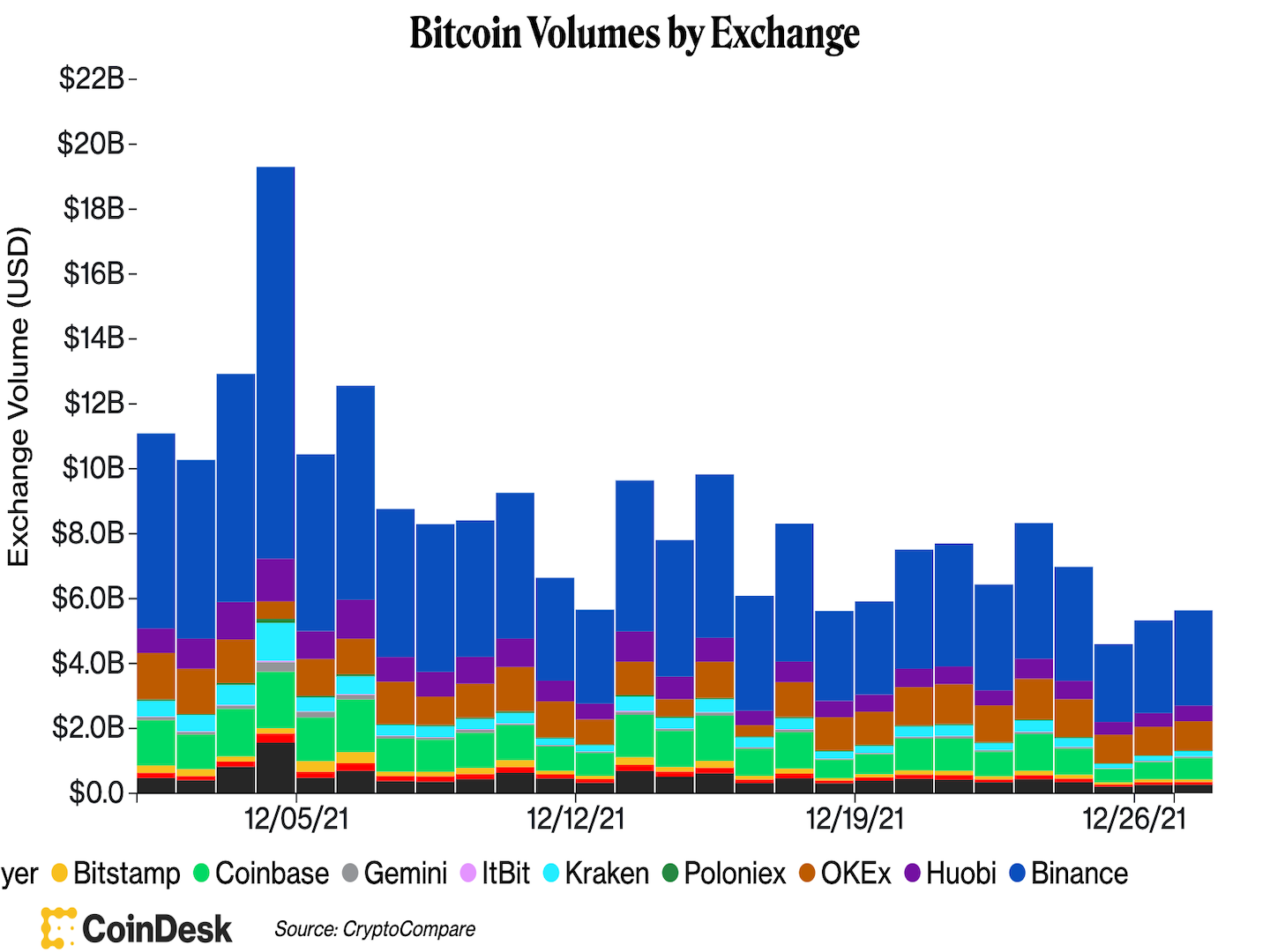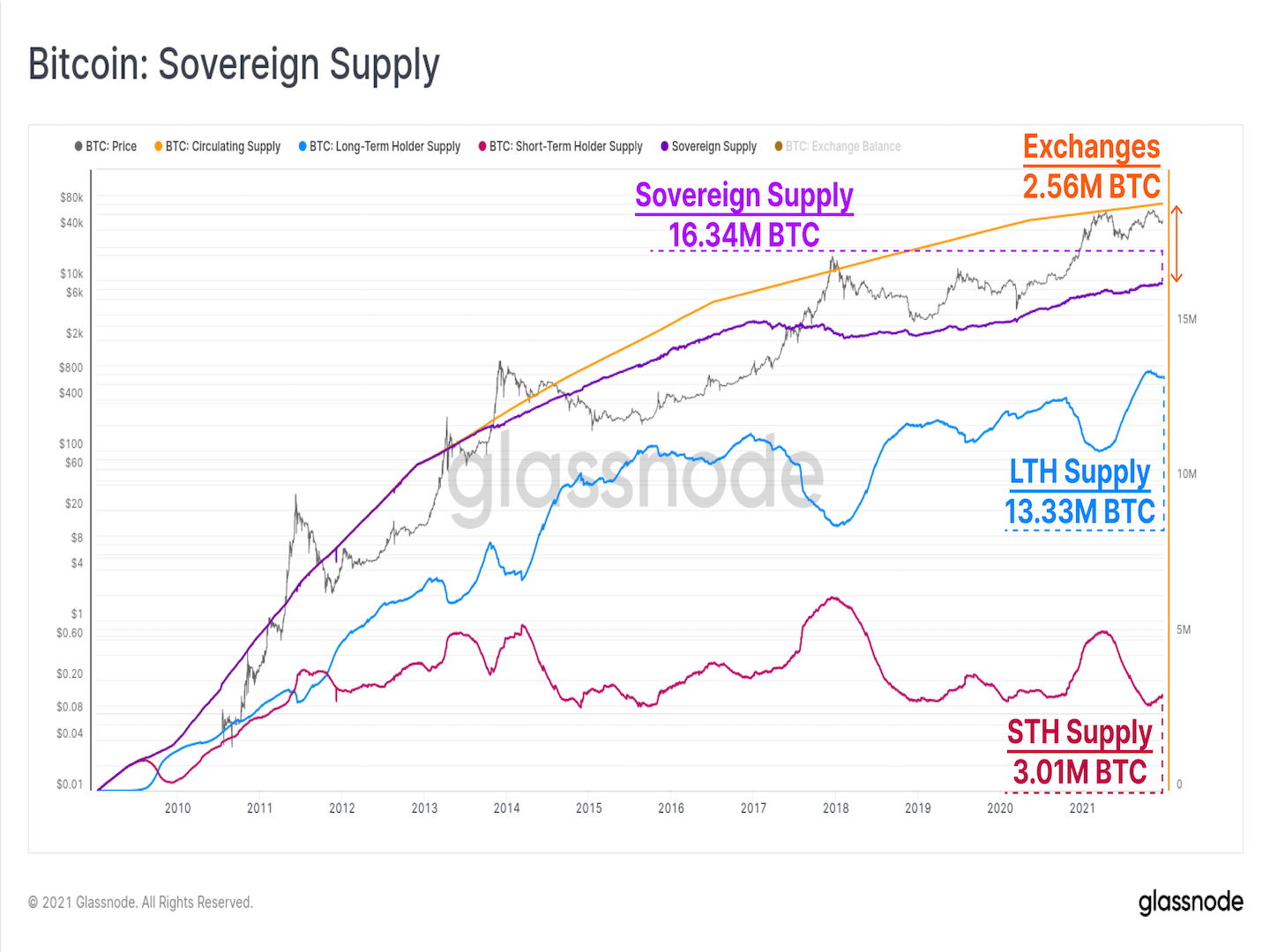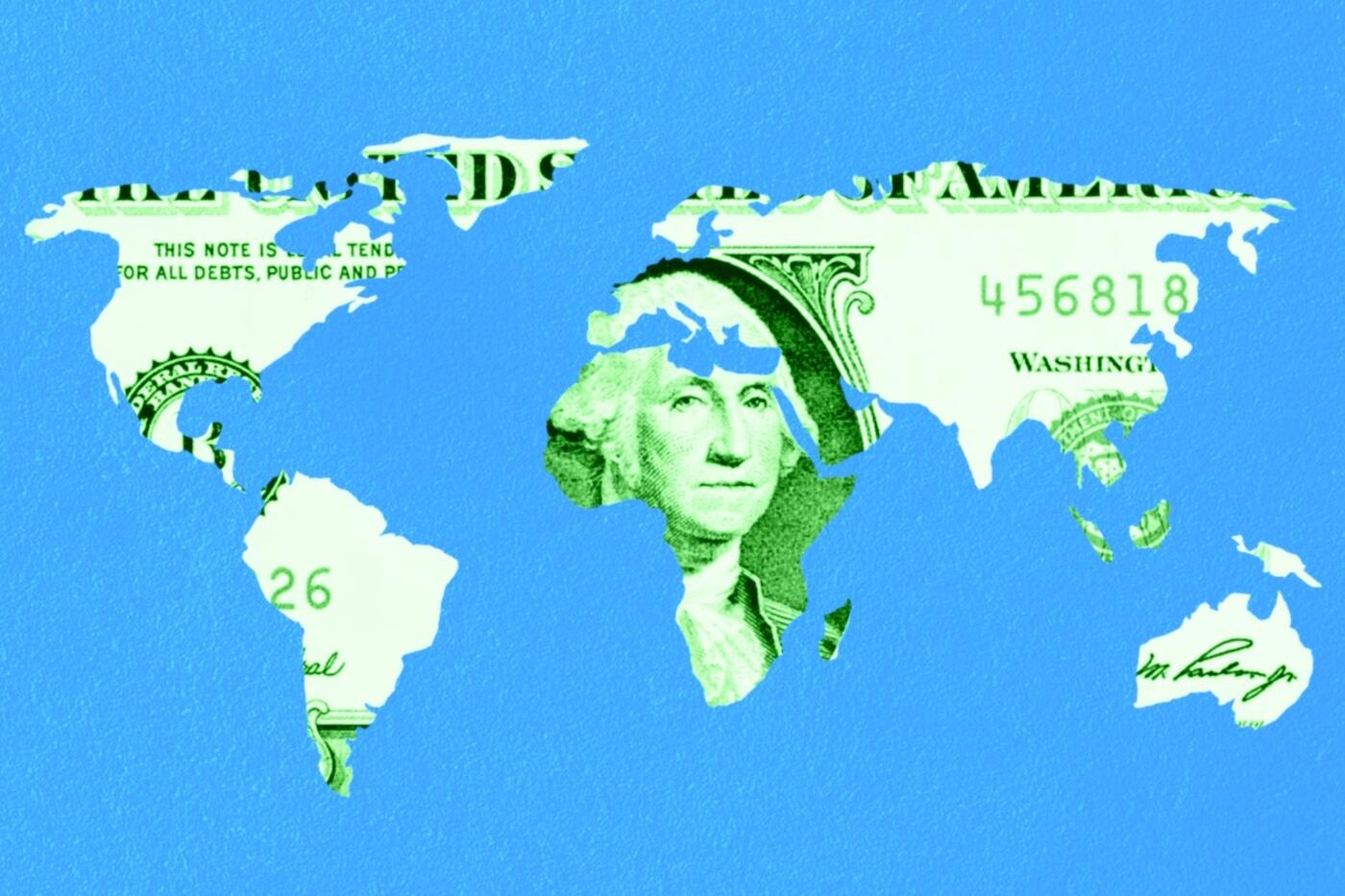The sovereign supply of bitcoin – total coins held outside of exchange reserves – hit an all-time high, blockchain data firm Glassnode reported; ether falls slightly.
Good morning. Here’s what’s happening:
Market moves: Bitcoin broke $52,000 briefly, while its supply outside of exchanges reached record highs.
Technician’s take (Editor’s note): Technician’s Take is taking a holiday hiatus. In its place, First Mover Asia is publishing a column by CoinDesk Chief Content Officer Michael Casey.
Prices
Bitcoin (BTC): $50,866 +.09%
Ether (ETH): $4,043 -0.8%
Markets
S&P 500: $4,791 +1.38%
DJIA: $36,302 +0.9%
Nasdaq: $15,871 +1.39%
Gold: $1,811 +0.2%
Market moves
Bitcoin, the oldest cryptocurrency, remained at the $51,000 level after it briefly broke above $52,000 during U.S. trading hours on Monday. At the time of publication, bitcoin was hovering just below $51,000. Ether was down slightly just above the $4,000 mark.
But trading activities were mostly muted, as the trading volume of the No. 1 cryptocurrency by market capitalization across major centralized exchanges was only slightly higher than it was on Sunday. Bitcoin’s low-volume rally came as stocks in the U.S. also rose in a week that’s traditionally marked by light but bullish trading.
Credit: CoinDesk/CryptoCompare
Meanwhile, as the market enters the end of the year, the so-called sovereign supply of bitcoin – total coins held outside of exchange reserves – reached an all-time high, according to blockchain data firm Glassnode.
(Glassnode)
The growth of bitcoin’s sovereign supply came as its long-term holders saw their ownership stake increase by 4.8% to reach 74.8% of all sovereign supply over the past year, Glassnode noted in its Dec. 27 newsletter. Short-term holders’ bitcoin ownership dropped from 28% this past January to 25.2% now.
“Such on-chain behavior is more typically observed during bitcoin bear markets, which in hindsight are effectively lengthy periods of coin redistribution from weaker hands, to those with stronger, and longer-term conviction,” Glassnode wrote.
Column
5 Ways Money Was Reimagined in 2021: Michael Casey looks back at a tumultuous year for money. (By CoinDesk Chief Content Officer Michael Casey)
It was the year of crypto!
For this, the first of two holiday editions of this Money Reimagined column, we frame this remarkable year in terms of how, in different ways, money was reimagined in 2021. We look at five themes, with links to past newsletters and podcasts.
You’re reading Money Reimagined, a weekly look at the technological, economic and social events and trends that are redefining our relationship with money and transforming the global financial system. Subscribe to get the full newsletter here.
In 2021, money became…
A meme
Whether it was the mania for dogecoin, the surge of interest in non-fungible tokens or the capacity for Wall Street Bets to set the price of “meme stocks” like GameStop, we witnessed a strange merging of finance and popular culture. As incredulous as people were in both traditional financial and Bitcoin circles, we at Money Reimagined felt somewhat vindicated. The trend underscored a theme we’ve explored in both the newsletter and the podcast: that monetary systems require a shared belief in their common value. This era of reimagined money is bound to see the deployment of art, iconography, stories and other cultural products to bolster the sense of belonging and belief among communities that form around these new systems.
A politicized idea
For the past century, no one really questioned the nature and structure of our systems of money. Money was issued by governments and it was run by banks. End of story. With the emergence of Bitcoin, there was suddenly a new way to think about things. But for most of its existence, the political class felt it could simply ignore it.
In 2021, that blissful ignorance suddenly became impossible. We first saw this with the debate over the infrastructure bill, most importantly in the U.S. Senate, when the impositions of a contentious tax reporting provision for cryptocurrency sales had the ironic effect of demonstrating that crypto had arrived in Washington. The fact that legislators wanted to tax crypto was a sign that it was recognized as a long-term prospect, a reliable source of tax revenue. Just as importantly, the crypto lobby, though ultimately unsuccessful in its bid to force changes to those more draconian parts of the provision, showed its clout on Capitol Hill has grown significantly. It forged a large, bipartisan coalition of lawmakers to support its preferred amendments and showed it will be a force.
Around the same time, the conversation around stablecoins as alternatives to central bank digital currencies started taking on greater appreciation in Washington. Randal Quarles, who was vice chairman of the Federal Reserve until he resigned from the post in November, even argued that stablecoins could bolster U.S. power overseas by tapping into private sector innovation that central banks inherently won’t have access to. That set the stage for an intense debate on stablecoins through the summer and fall, particularly around whether issuers of stable tokens such as USDC and PAX should be required to get banking licenses.
Finally, in December, a crypto hearing in the House of Representatives revealed something that none of us would have predicted a year ago: some very well-informed questions from lawmakers. It seems that many in Congress have finally done their crypto homework. We had Nik De, CoinDesk’s managing editor for global policy and regulation, on the podcast to discuss it.
A global dollar (CoinDesk archives)
A matter of geopolitical importance
Even if it took federal politicians some time to wake up to the political ramifications of cryptocurrencies and of the central bank-led alternatives they helped spawn, China’s rapid development of the latter had caught the attention of academics and think tanks. They recognized that Beijing’s deployment of its Digital Currency Electronic Payments (DCEP) system, which went in for heavy testing in 2021, has the potential to disrupt U.S. dominance of the global financial system.
What few saw coming was that China would also forfeit a dominance of bitcoin mining that it had for many years by launching a crackdown against such operations around the country. That led to a massive drop in the Bitcoin network’s capacity, as about half of the global hashrate, or computing power, shut down. But that hash power soon moved elsewhere, and especially to the U.S. By October, the U.S. had become the biggest mining location in the world. Already people are talking about what this increased role for the U.S. in a decentralized currency means for the U.S. as China pushes its centralized monetary solution on the world.
A speculative force for social innovation
In 2020, the speculative fervor around decentralized finance fueled such a powerful flywheel of investment capital and innovation that it helped frame our look back on the 12 months that preceded the one-year anniversary of the “Money Reimagined” podcast this past October. In 2021, the phenomenon was taken to a new level as speculation around non-fungible tokens fueled a flurry of ideas around the future of media, art and collectibles, which in turn kept attracting more and more money into the space. It all felt very much like a bubble, but it was also clear that speculation in this case was a feature, not a bug, a powerful driver of change – even if we don’t yet know where that change is ultimately taking us.
A dinner party conversation
Perhaps the biggest theme of 2021 was simply how mainstream crypto had become in terms of public awareness. With the NFT zeitgeist, soaring token prices, the fact that Washington was more interested to learn about it and the ideas that swirled around bitcoin being a bet against a failing monetary system, crypto was suddenly everywhere. Everyone wanted to understand it. Meanwhile, plenty of people who did understand it, as well as many who didn’t, formed strong views on crypto’s pros and cons. So, be warned as you sit down for a holiday dinner with family, you may be asked to explain yourself.
Happy holidays!
Important events
8 a.m. HKT/SGT (12 a.m. UTC): Spain retail sales (Nov. YoY)
1:55 HKT/SGT (5:55 a.m. UTC): U.S. Redbook index (Oct. YoY)
2 p.m. HKT/SGT (6 a.m. UTC) U.S. Housing price index (Oct. MoM)
All writers’ opinions are their own and do not constitute financial advice in any way whatsoever. Nothing published by CoinDesk constitutes an investment recommendation, nor should any data or Content published by CoinDesk be relied upon for any investment activities. CoinDesk strongly recommends that you perform your own independent research and/or speak with a qualified investment professional before making any financial decisions.
Recommended Content
Editors’ Picks

Bitcoin Price Forecast: BTC holds above $100K following Fed’s Michael Barr resignation
Bitcoin edges slightly down to around $101,300 on Tuesday after rallying almost 4% the previous day. The announcement of Michael S. Barr’s resignation as Fed Vice Chair for Supervision on Monday has pushed BTC above the $100K mark.

Injective Price Prediction: INJ 3.0 upgrade reduces the token supply
Injective price extends its gains for the seventh day in a row, trading above $26 on Tuesday after rallying more than 25% the previous week. The announcement of the INJ 3.0 upgrade on Sunday, which focuses on significantly decreasing the token supply, could further fuel the ongoing rally.

Solana Price Forecast: Open Interest reaches an all-time high of $6.48 billion
Solana price trades slightly down on Tuesday after rallying more than 12% in the previous week. On-chain data paints a bullish picture as SOL’s open interest reaches a new all-time high of $6.48 billion on Tuesday.

Ripple's XRP eyes rally to new all-time high after 40% spike in open interest
XRP open interest surged by 40% in the past 24 hours. Buying pressure across exchanges and investment products helped XRP to maintain a bullish outlook. XRP could be on the verge of a massive breakout after testing the resistance of a bullish pennant.

Bitcoin: 2025 outlook brightens on expectations of US pro-crypto policy
Bitcoin price has surged more than 140% in 2024, reaching the $100K milestone in early December. The rally was driven by the launch of Bitcoin Spot ETFs in January and the reduced supply following the fourth halving event in April.

Best Forex Brokers with Low Spreads
VERIFIED Low spreads are crucial for reducing trading costs. Explore top Forex brokers offering competitive spreads and high leverage. Compare options for EUR/USD, GBP/USD, USD/JPY, and Gold.


